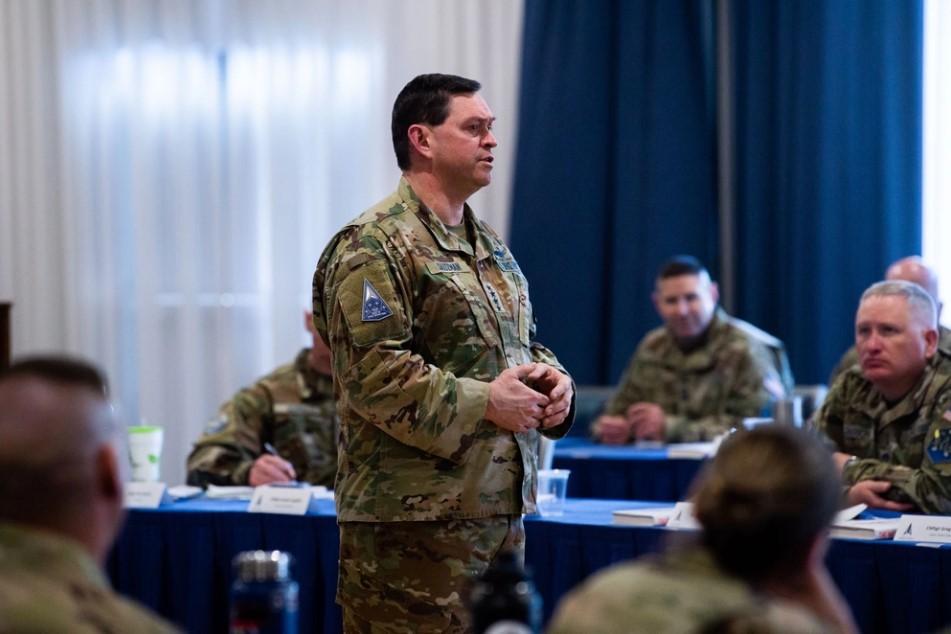
Chief of Space Operations Gen. Chance Saltzman speaks at an enlisted leader summit at the U.S. Air Force Academy in Colorado Springs.
COLORADO SPRINGS—The launch of dozens of satellites for a proliferated low-Earth-orbit constellation focused on missile warning and tracking could require more operational units within the Space Force to handle it, and the service is figuring out just how it would need to grow.
The Space Development Agency’s (SDA) multiple tranches of dozens of small satellites initially will be flown by contractors with military oversight, a unique model for the Space Force but not completely foreign. The large, proliferated network eventually may outgrow the existing missile warning units within the Space Force, Chief of Space Operations Gen. Chance Saltzman told reporters.
“Those capabilities will likely be put into the deltas associated with their missions until we evaluate that the delta scope of responsibility has exceeded its capacity,” Saltzman said at the Space Symposium here. “That’s when you start to think about do we need a separate delta to take on those responsibilities. But, in essence, all of those SDA satellites will eventually become part of an operational constellation and that operational constellation will have a Space Force unit that’s assigned to manage that mission set.”
Lt. Gen. Stephen Whiting, commander of Space Operations Command (SpOC), says his command is working on oversight of contracted operators now based on other missions SpOC has adopted.
For example, last summer SpOC took over the U.S. Navy’s Mobile User Objective System and Ultra High Frequency Follow-On satellite systems, which are largely operated by contractors with government oversight.
“So we’ve been doing this now for about nine months with them, so that is not an uncommon model,” Whiting says.
The existing Satellite Control Network is similar and is largely the model that SDA is using.
“It may be different than how we’ve traditionally done things, but it’s not brand-new to us and we certainly are doing things like that in our enterprise today,” Whiting says.
He notes a decision will need to be made over the next couple years for how the SDA tranches will be integrated into operational units.





